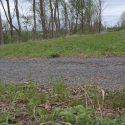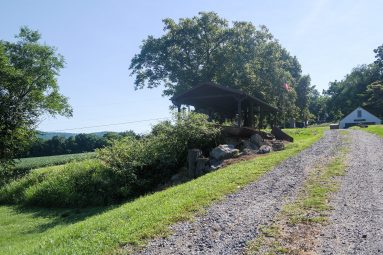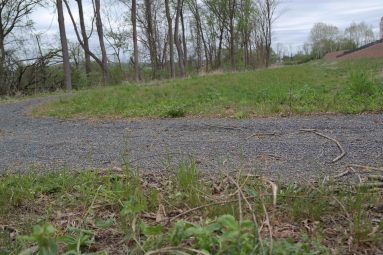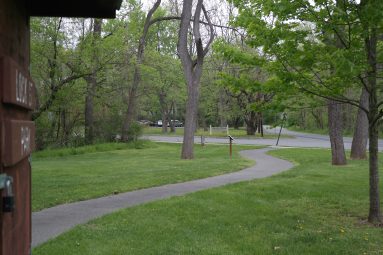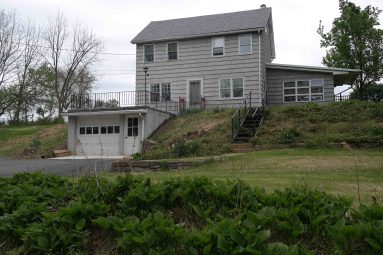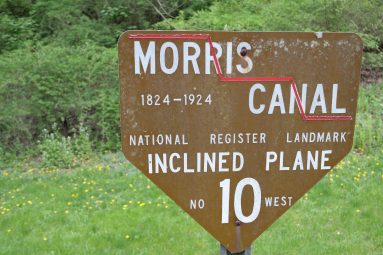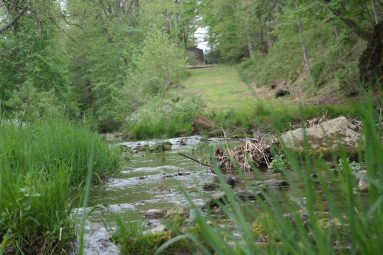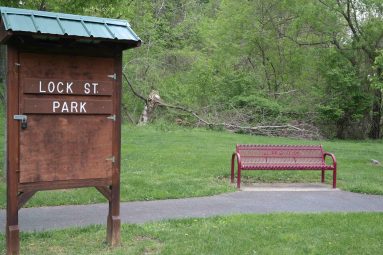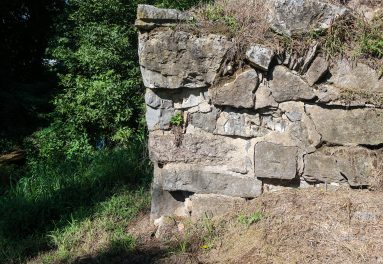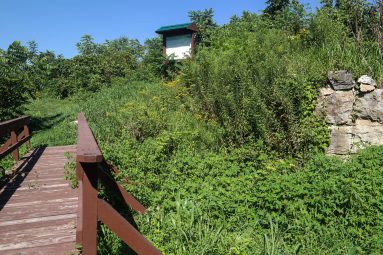This stretch of the canal left the industrial areas of Phillipsburg behind for the pastoral farm fields of the upper Lopatcong Creek valley.
Click left and right on the image to move to the next.
The canal prism between the top of Plane 10 West and the bottom of Plane 9 West rose less that one foot in one and a half miles. The canal was built against the hillside by excavating into the slope and using the displaced earth to create the towpath embankment downslope. The resulting channel was roughly 25 feet wide at its bottom and 45 feet wide at the water level, although this width varied somewhat with the natural contours of the hillside. When originally built the bottom of the canal was lined with clay in an effort to keep it as watertight as possible. The canal was four to five feet deep and this depth was maintained with a steam-powered dredge. In this area the canal has been adapted to act as a stormwater retention basin for Sycamore Landing.

